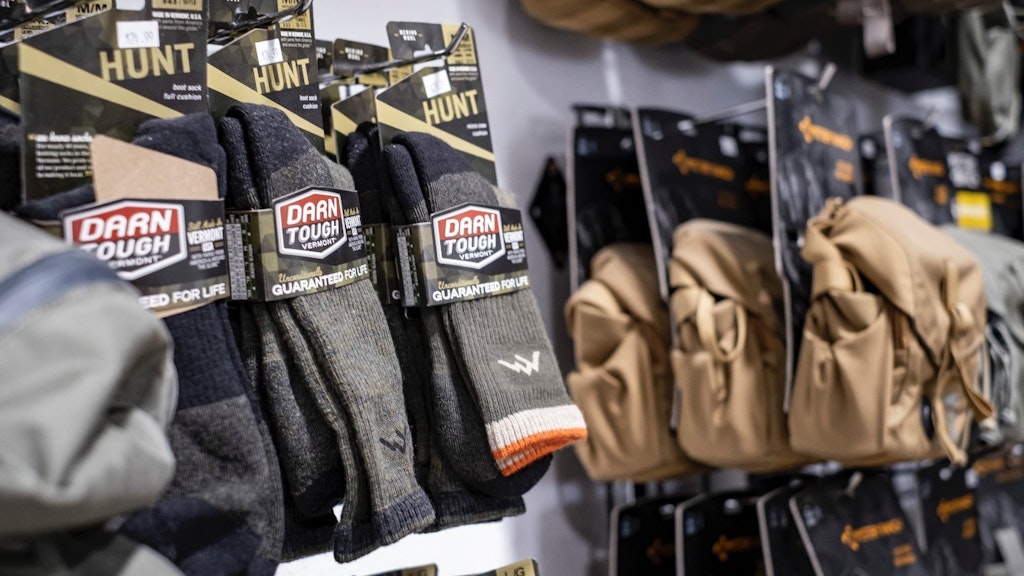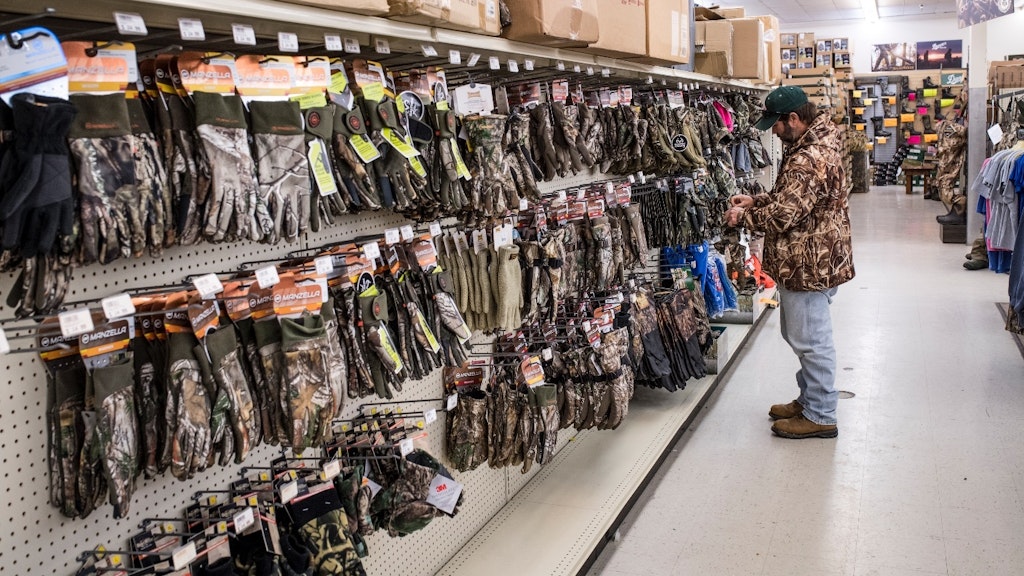Cold hands and feet have ruined more outdoor excursions than any other piece of gear. They are the first thing to get cold in the field and often seem to be the last thing to warm up when back at home.
Cold hands and feet are also the number one areas treated for frostbite. How many times have you heard or personally experienced the following scenario?
Imagine sitting in a deer stand, waiting for the buck of a lifetime to step out. You were there before daylight and have been sitting motionless for several hours. On the walk in, you worked up a little bit of a sweat, but you’ve since cooled down.
It starts with a little bit of tingling in your toes. You wiggle them a little bit, and that seems to help. An hour later, you are miserable and cold. To make matters worse, the gloves you bought from the local hardware store have become wet from clearing the snow off of your stand platform. Your hands are cold. Your feet are cold. Though your body is well insulated and warm, your latest time in the stand has become an exercise in misery and a battle of wills. Will you leave? Stay? Just one more half hour…
But 15 minutes later, you’re ready to jump out of the tree.
All of this could have been avoided if you had all of the proper gear — not just your coat and bibs.
Outdoor and sporting goods retailers have a unique opportunity to provide their customers with a wide range of products that are essential for outdoor activities. While many retailers focus on items such as firearms, bows, tents, backpacks, and other large items, it’s important not to overlook smaller, yet every bit as important items such as socks and gloves. In this article, we will explore why outdoor and sporting goods retailers, including firearms retailers, should sell quality socks and gloves, and some of the benefits that come from doing so.
First and foremost, socks and gloves are essential items for outdoor activities. Whether your customers are hunting, hiking, skiing, or just spending time outdoors in cold weather, socks and gloves are crucial to keeping their hands and feet warm and dry. In fact, not having the right socks and gloves can make or break an outdoor adventure. Cold, wet feet or hands can quickly ruin an otherwise enjoyable activity, while warm, dry feet and hands can help your customer stay comfortable and enjoy their selected outdoors activity for longer periods of time.
Socks and gloves are also relatively inexpensive items that offer a high return on investment — for the customer and the retailer alike. While firearms and optics, a good pair of hiking boots or a high-end tent can cost hundreds or even thousands of dollars, socks and gloves are typically a much more affordable purchase. This means that retailers can stock up on a variety of styles and sizes without breaking the bank, and customers can easily purchase multiple items without having to spend a significant amount of money. They can even turn into impulse purchases.
Another reason why retailers should sell socks and gloves is that they are easy to merchandise.
Space in your retail business is finite, but unlike larger items such as tents or guns, socks and gloves can be easily displayed in small, organized sections of the store. This makes it easy for customers to find the styles and sizes they need, and it also helps retailers keep track of their inventory. Additionally, socks and gloves are small and lightweight, which makes them easy to store, transport, and set up for display.
Socks and gloves also give the retailer opportunity for a high rate of repeat business. Even with moderate use, socks and gloves eventually wear out. Balancing high quality with fair pricing, you’ll get premium profits and, while customers may only need to purchase a firearm once every few years, they will likely need to purchase new socks and gloves on a more frequent basis. This means that you have yet another opportunity to build your customer base by offering high-quality socks and gloves that customers will return to purchase time and time again. Because they are a lower-priced item, they can also be used as premiums or “spiffs” to add on when a customer buys a premium pair of boots and another pair of socks, or something like a pair of gloves with every rifle.
In addition to being essential items for outdoor activities, socks and gloves offer a high margin for retailers. While the retail price of a pair of socks or gloves may be relatively low, the cost of goods sold is even lower. This means that you can make a healthy profit on each pair of socks or gloves you sell — especially in the premium lines. Additionally, retailers can offer promotions and sales on socks and gloves to entice customers to purchase more items, which can further increase their profit margins.
Socks and gloves also provide an opportunity for retailers to offer a larger variety of branded merchandise. Some retailers, even smaller ones, have their own brands of socks and gloves, which helps to build brand loyalty among their customers. It is certainly an option worth exploring. By offering high-quality, branded merchandise, these retailers can differentiate themselves from their competitors and offer their customers a unique product.
There are many options when it comes to these items. Following some of the following recommendations can help you shorten the learning curve and get you up and running and making money faster.
Socks
We all know the daily wear socks — most people wear socks made of 100% cotton. Cotton, however, belongs on the shelves of a discount box store, and inside of a child’s tennis shoe going back and forth to school. They are inexpensive, easily replaceable, and with a cup of bleach in the wash, they maintain their wearability and decent looks for a long time. Cotton, however, does not belong inside a hunting or hiking boot.
There is a reason why the old timers used to say, “cotton kills.” Many of the deaths attributed to the famous 1940 Armistice Day storm were the result of not having the right gear for the conditions. The weather had been warm; it was still November in the upper Midwest. Many people headed out into the duck marsh that day wearing their cotton clothes and light jackets. Some wore shoes instead of boots. When the storm came in, more than 50 of them died.
When it comes to socks and gloves, synthetic, will, or blends of the two are the order of the day.
Synthetics/Bamboo and Synthetic Blends: The main advantage to synthetic socks is their cost. They tend to require less labor in the manufacturing process, and there is an almost infinite supply of material to use for production. The invention of polar fleece in the 1980s was a giant leap forward in technology and comfort when it came to synthetic materials used in outdoor products. Insulators like DuPont’s hollowfill were put into hats, coats, gloves and sleeping bags — and, yes, they were even made into socks.
These types of high-loft materials, combined with their inability to soak up moisture, and, instead, transport it away from the body, made it a great material for everything from insulated outerwear to long underwear and footwear.
Bamboo fibers also make excellent socks that transport moisture well and have inherent anti-microbial properties. They are included with synthetics because of their similar properties.
Wool: Wool is one of nature’s wonder materials. Several different animals insulate themselves with wool, with sheep being the most well-known. Alpacas also grow their own type of wool. Both of them are excellent insulators and have their own advantages. Unlike cotton, wool insulates even when wet. There have also been several studies that show that wet merino wool generates its own heat through the movement of water into the fibers when the animal (or you, in the case of apparel or accessory’s) moves. Alpaca wool, on the other hand, doesn’t absorb but, rather, transports water away from the body, similar to synthetic fibers. It also needs no processing to be soft, unlike some wools on the market. Wool socks have anti-microbial properties, but can have a distinct wool smell when wet. Some quality brand names to explore are Darn Tough, Kenetrek (which also sells great boots!), Smartwool, Duckworth, Browning, Fox River and Farm to Feet for merino. Warrior, Montana Alpaca, and Pacas are some great sources for Alpaca wool items, including socks and gloves.
Gloves
While there are varied materials that make up a sock, the overall variants of them are less than gloves. (for example, you don’t see many “toeless” socks). Like socks, having a seasonal assortment of gloves will allow you to sell more to more people. Not everyone likes bitter cold, but everyone can still use a nice pair of lightweight gloves for chilly mornings.
Also like socks, cotton has a limited use in gloves — usually for things like light gardening or yard work.
Some recommendations of gloves you should explore to carry in your store:
- Leather gloves. For working in the barn, moving lumber, and shooting in cool weather, a pair of lightweight cowhide or deerskin gloves are hard to beat.
- Fingerless gloves. These are somewhat specialized, but many shooters (especially handgun shooters) and outdoorsmen and women use them.
- Phone-compatible gloves. Having a few types of these in stock will take advantage of the huge amount of smartphones in the marketplace. Many companies offer their product with fingertips that conduct touch to your phone.
- Basic insulated gloves. These are for cold weather, going to and from your car, and short use.
- Heavy-duty “outdoor” gloves. These are the Cadillac of gloves, made from heavy-duty nylon with breathable membranes such as Gore-Tex or Sympatex. They are also available in a range of prices, with some running into the several-hundred-dollar range. With a properly trained staff who knows how to sell them, these types of glove can add significantly to your bottom line.
Not only are socks and gloves essential items for outdoor activities, but they also offer a high return on investment, are easy to merchandise, have a high rate of repeat business, offer a high margin for retailers, provide an opportunity for branded merchandise, and help you build relationships with your customers. By stocking up on a variety of styles and sizes of socks and gloves, retailers can provide their customers with the essential items they need to enjoy the great outdoors.









